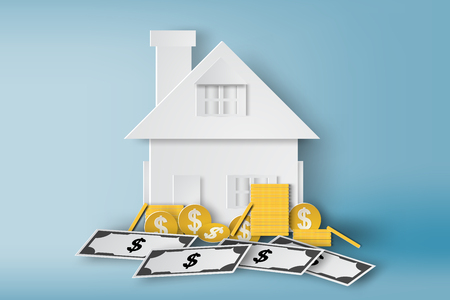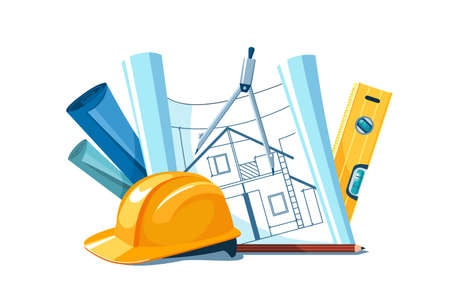1. Understanding the RWA Collective Tax Payment Initiative
The concept of a collective tax payment drive by Resident Welfare Associations (RWAs) is gaining significant attention across Indian cities. RWAs, which are grassroots-level community bodies commonly found in residential colonies, apartment complexes, and gated communities, play a pivotal role in local governance. The primary purpose of these associations is to safeguard the interests and welfare of residents, acting as a bridge between the community and municipal authorities. In recent years, many RWAs have started organising collective tax payment initiatives to streamline the process for residents and ensure timely compliance with government regulations. This approach not only simplifies property tax or municipal dues payments for individual homeowners but also promotes a sense of unity within the neighbourhood. By pooling resources and coordinating efforts, RWAs can negotiate with civic bodies for better amenities, resolve grievances more effectively, and ensure that funds collected are utilised transparently for the community’s benefit. Such drives address common challenges faced by residents in navigating bureaucratic processes and contribute to improved civic management, making them highly relevant in the context of Indian urban living.
2. Importance of Collective Tax Payment for Residents
In Indian urban societies, the concept of collective tax payment through Residents’ Welfare Associations (RWAs) is gaining popularity due to the tangible benefits it brings to local communities. When residents come together under the RWA banner to pay municipal taxes as a group, several key advantages emerge that directly enhance daily living and foster a spirit of unity.
Hassle-Free Payments: Streamlining the Process
Managing property or municipal taxes can be challenging for individual homeowners, especially with varying deadlines, documentation, and online portals that may not always function smoothly. Through an RWA-led collective drive, all paperwork and digital submissions are centrally coordinated by the association, reducing confusion and saving time. This system is particularly helpful for senior citizens and busy professionals who might otherwise struggle with individual submissions.
Transparency in Transactions
One major concern among Indian residents is ensuring that their tax payments are accounted for correctly and reach the appropriate municipal authorities. By pooling payments through the RWA, there is a transparent record maintained by both the association and the authorities. The RWA provides receipts and maintains logs accessible to all members, ensuring no ambiguity or risk of misappropriation.
Benefits Overview: Individual vs. Collective Payment
| Parameter | Individual Payment | Collective Payment via RWA |
|---|---|---|
| Payment Process | Multiple visits/online attempts | Single-window coordination |
| Receipt Handling | Self-managed, prone to loss | Centrally recorded by RWA |
| Dispute Resolution | Individual follow-up with authorities | RWA acts on behalf of members |
| Bargaining Power | No leverage with authorities | Potential for negotiation as a collective group |
| Convenience Level | Moderate to low | High – minimal hassle for residents |
The Power to Negotiate with Municipal Authorities
One distinct advantage that emerges from collective payment is bargaining power. When RWAs represent a large group of residents, they have a stronger voice while negotiating with municipal bodies regarding tax rates, penalty waivers, or service improvements. In many Indian cities like Gurgaon or Bangalore, RWAs have successfully lobbied for early-bird discounts or streamlined grievance redressal mechanisms simply because they acted as unified entities.
Cultural Context: Community Spirit in Indian Societies
The tradition of community welfare runs deep in Indian urban neighbourhoods—be it through festivals, security arrangements, or managing shared resources like water and electricity. The move towards collective tax payment is a natural extension of this spirit, creating trust among neighbours and strengthening the bond between residents and their governing body. For many, it’s not just about convenience but also about building an empowered, transparent residential ecosystem where everyone’s interests are protected.

3. How the RWA Organizes the Payment Drive
Step-by-Step Planning for a Smooth Collection Process
The Resident Welfare Association (RWA) begins by forming a dedicated committee comprising proactive members from different blocks or towers. This team chalks out a detailed plan, starting with fixing convenient dates and times for the collective tax payment drive, usually aligning it with weekends or public holidays to maximise participation. The committee then prepares an official notice, in both English and Hindi, communicating the drive’s purpose, benefits for all residents, and step-by-step instructions for payment. These notices are circulated via WhatsApp groups, society bulletin boards, and sometimes even through word-of-mouth by security guards and housekeeping staff.
Utilising Common Areas for Collection Points
To ensure accessibility and transparency, the RWA sets up temporary collection desks in strategic common areas such as the community hall, clubhouse lobby, or near popular tea stalls within the society premises. These locations are chosen to make it convenient for residents of all age groups to participate without having to leave their housing complex. Volunteers from the committee are stationed at these desks with registers and receipts ready, ensuring every payment is properly documented and acknowledged on the spot.
Embracing Digital India: Leveraging Popular Payment Platforms
Recognising the rapid digital adoption across urban India, RWAs now encourage residents to make payments using widely used platforms like Paytm, Google Pay, PhonePe, or BHIM UPI. QR codes unique to the RWA’s official account are displayed prominently at each collection desk and shared digitally in resident groups. For those who prefer cash or cheque payments—often senior citizens—the traditional option remains available alongside digital methods. After each transaction, an e-receipt or SMS confirmation is sent instantly to the payer’s mobile number for added assurance.
Ensuring Trust and Transparency
The RWA maintains real-time records of all collections, which can be viewed by committee members for cross-verification. At the end of each day during the drive, summary reports are shared transparently in the society’s Telegram or WhatsApp groups so that every resident is updated about the progress and amount collected towards the welfare fund.
4. Resident Participation and Community Spirit
One of the defining strengths of any RWA collective tax payment drive is the strong involvement of residents, which nurtures a deep sense of community spirit. In India, where neighbourhood ties are often celebrated through local festivals and group activities, RWAs play a crucial role in bringing people together for common causes. By encouraging everyone’s participation in the tax payment initiative, RWAs not only ensure compliance but also foster unity and trust among members.
RWAs often leverage familiar cultural platforms—like Diwali melas, Holi get-togethers, or Independence Day flag hoisting ceremonies—to spread awareness about collective welfare drives. These events become more than just social gatherings; they serve as opportunities to communicate important information and encourage active participation from all sections of society, regardless of age or background.
How RWAs Foster Unity During Drives
| Activity | Description | Cultural Reference |
|---|---|---|
| Tax Payment Camps | Organising on-site assistance booths during weekends | Similar to setting up stalls during Ganesh Chaturthi celebrations |
| Community Announcements | Using WhatsApp groups or notice boards for updates | Much like inviting everyone for a Navratri Garba night |
| Group Discussions | Hosting meetings to address concerns and clarify doubts | Reflects the open dialogue seen during RWA AGM sessions post-Puja gatherings |
The Power of Local Festivals and Gatherings
By aligning collective tax payment efforts with local festivities, RWAs tap into the inherent community spirit that is so deeply rooted in Indian society. For instance, after distributing prasad at a temple event or following a Lohri bonfire, committee members might share updates about ongoing welfare initiatives. This approach makes information accessible and motivates residents to participate as a united front.
Building Lasting Trust Among Residents
The transparency shown by RWAs while managing funds and organising community drives goes a long way in building trust. Residents feel reassured when they see their contributions being managed responsibly and used for shared benefits—be it better security, improved sanitation, or enhanced festive celebrations. Thus, community participation in RWA drives becomes an extension of the ‘Vasudhaiva Kutumbakam’ philosophy—the world is one family—making every resident feel included and valued.
5. Addressing Challenges and Ensuring Accountability
When implementing an RWA collective tax payment drive for residents welfare, certain challenges naturally arise. Among the most common concerns voiced by Indian residents are transparency in fund utilisation, proper record-keeping, and ensuring that every household gets fair representation in decision-making processes. These concerns are valid, especially considering the diversity within Indian residential complexes, where language barriers, varying education levels, and unique community priorities can impact participation.
Transparency in Financial Matters
To build trust among residents, RWAs must commit to transparent financial practices. This means maintaining detailed ledgers of all collected funds, expenditures, and pending dues. Monthly or quarterly financial reports should be shared with all residents through notice boards or WhatsApp groups—platforms widely used across Indian societies. For further assurance, involving a third-party auditor from time to time can reinforce that no misuse of funds is taking place.
Accurate Record-Keeping
Proper documentation is crucial for seamless tax payments and welfare initiatives. Digital tools like Google Sheets or simple accounting software (which many Indian RWAs have begun adopting) help track contributions and expenses efficiently. Every transaction should be acknowledged with a receipt—whether digital or hard copy—to avoid any confusion or disputes later on.
Fair Representation for All Residents
It’s essential that RWA decisions reflect the collective voice of every household, not just a select few. Regular open meetings—both in-person and virtual (for those who travel frequently or have mobility issues)—can help ensure inclusivity. Voting on key matters such as budget allocation or choosing vendors should follow a one-flat-one-vote system to maintain fairness.
Culturally Sensitive Solutions
Indian communities often comprise people from different states and backgrounds. To bridge cultural gaps, RWA communication should be bilingual or even multilingual when necessary, ensuring everyone understands what’s at stake. Additionally, forming sub-committees representing various wings or blocks helps decentralise power and gives more people a say in how welfare funds are utilised.
Checks and Balances Aligned with Indian Sensibilities
Periodic audits, grievance redressal mechanisms (such as suggestion boxes near lifts or designated WhatsApp numbers), and public display of key decisions create an environment of accountability. These steps resonate well with Indian values of collective responsibility and community-driven progress, making sure the RWA tax payment drive truly works for everyone’s benefit.
6. Success Stories and Testimonials from Indian RWAs
Across India, several Resident Welfare Associations (RWAs) have pioneered the collective tax payment drive, creating positive ripple effects in their communities. For instance, the RWA of Greenwood Residency in Noida initiated a door-to-door awareness campaign, helping residents understand the benefits of timely property tax payments. As a result, they achieved a 98% compliance rate within their society for the financial year 2023-24. This not only reduced individual stress but also led to improved municipal services as the local authority recognised their efforts and prioritised waste management and road repairs for the area.
Similarly, the Lotus Heights RWA in Bengaluru took an innovative approach by hosting weekend tax clinics with the help of local chartered accountants. Residents could clarify doubts, fill out forms, and make payments on the spot. Mrs. Priya Menon, a long-time resident, shared her experience: “Earlier, I used to struggle with online portals and deadlines. With our RWA’s initiative, everything was simplified and transparent.”
The impact is not limited to big cities alone. In Pune’s Anand Society, the collective effort led to a significant reduction in late fee penalties for members. The society also negotiated with the municipal corporation for early bird discounts as part of bulk payment agreements. Mr. Arvind Patil, the RWA secretary, highlighted how these savings were redirected towards children’s playground renovations and security upgrades.
In Hyderabad, the Sunrise Apartments RWA built a strong sense of unity by encouraging residents to participate through group WhatsApp updates and regular feedback sessions. According to Dr. Sameer Shah, another resident, “Paying taxes together made us realise our collective power. We now have stronger ties with local officials and quicker grievance redressal.”
These success stories underscore that when RWAs take proactive steps towards collective tax payment drives, they not only fulfil civic responsibilities but also enhance residents’ quality of life. Such initiatives foster greater transparency, accountability, and community spirit—key values resonating across Indian neighbourhoods.
7. Future Outlook and Policy Suggestions
Looking ahead, the potential for scaling RWA collective tax payment drives across Indian neighbourhoods appears highly promising. As more Resident Welfare Associations (RWAs) witness the tangible benefits of organised tax compliance, there is a growing appetite to replicate these initiatives in other urban and semi-urban localities. Collaboration with local municipal corporations and civic bodies can ensure smoother processes, timely dissemination of information, and on-ground support that addresses unique challenges faced by each community. To further strengthen the impact, policy improvements are essential—these may include incentives for RWAs undertaking collective drives, simplified digital platforms for group payments, and dedicated helplines in regional languages. Policymakers could also consider periodic workshops jointly conducted by RWAs and government officials to build trust and awareness. Ultimately, a tailored approach that recognises the cultural diversity and administrative realities of Indian neighbourhoods will help mainstream such drives, fostering a culture of civic responsibility and shared growth across the country.


